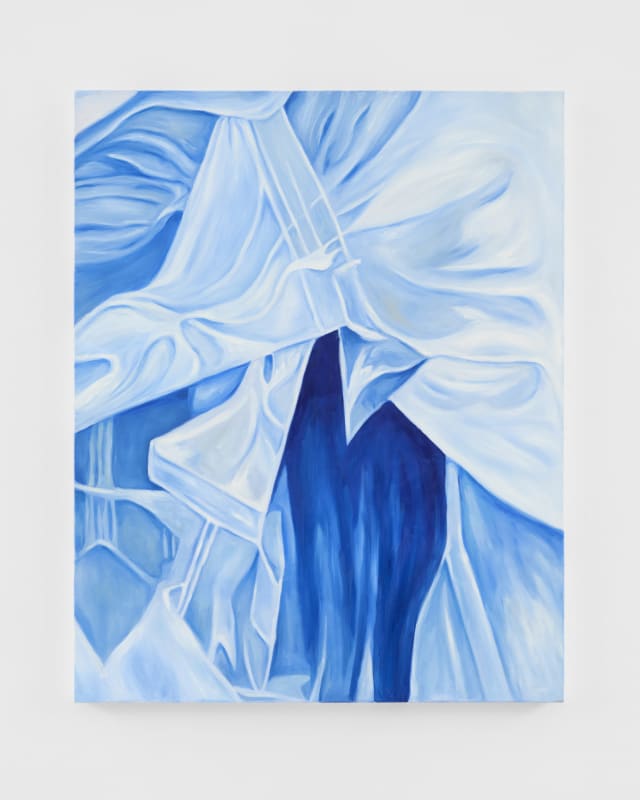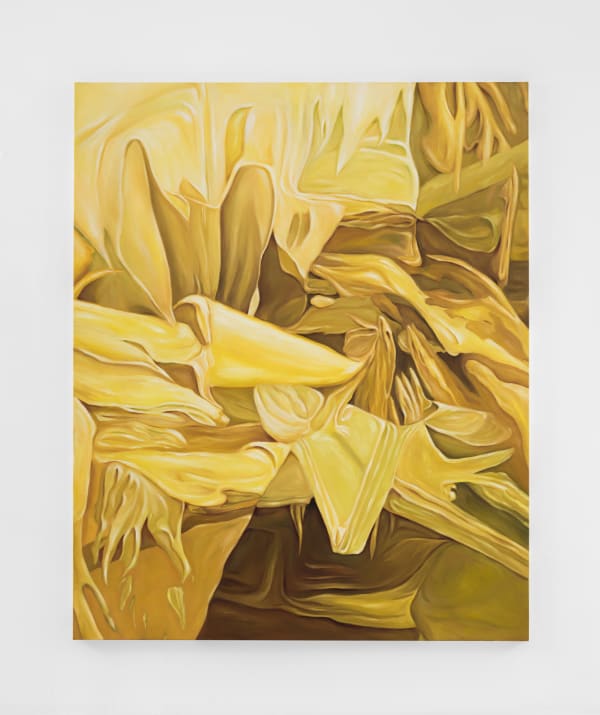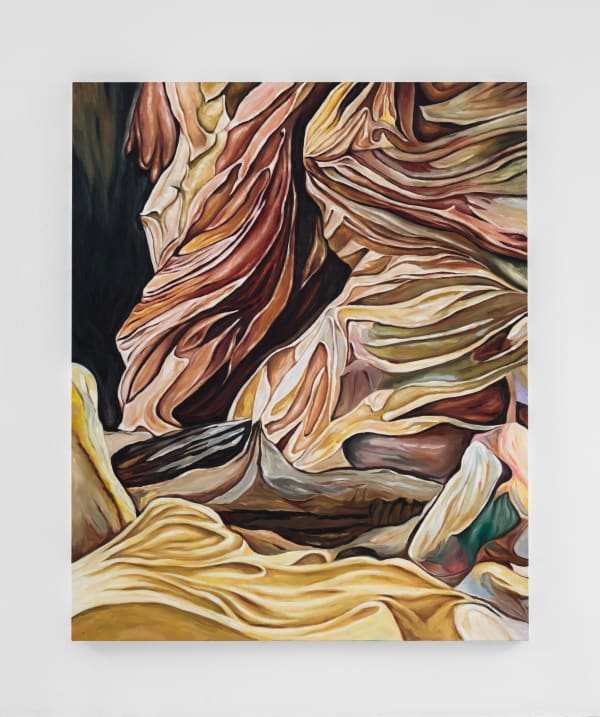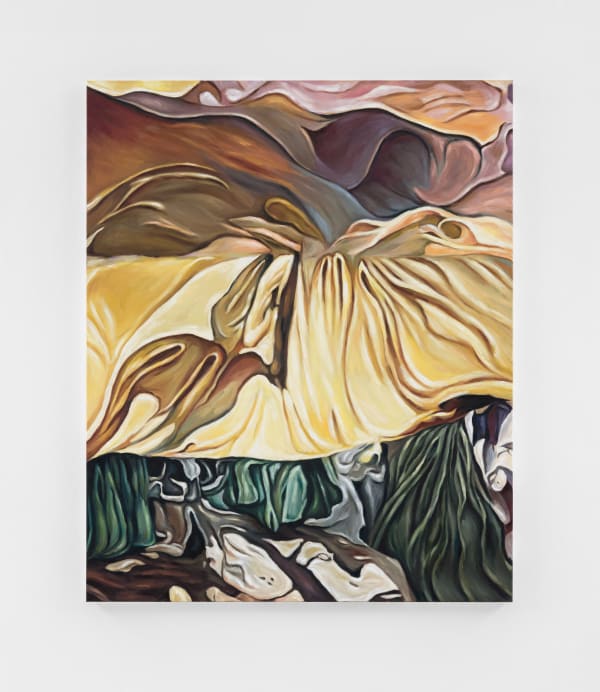Someone else is breathing: Emma Bjurström
Opening
Thursday 8.05 at 5 – 7 PM
Someone else is breathing
While working on her new paintings, Bjurström has asked herself whether a work in a series of paintings can push aside the one that came before it, replacing the previous work. Is it born out of the same thought processes, or is the new work merely an iteration of familiar ideas?
She has felt an urge and a longing to change her previous visual language — where almost recognizable objects drift in abstract surroundings, almost perceived by the viewer, only to dissolve again. Bjurström has often depicted pieces of fabric in her paintings as a way to ground her images in reality. “Something to hold on to,” she says. Throughout art history, fabric has appeared in painting again and again. It can represent the human condition, cultural identity, and the passage of time.
Now, Bjurström turns her focus inward, toward the fabric itself, as purified matter: fibers, threads, color, and gaps. Holes that let air in. Air, though not considered an object in the traditional sense, makes things move. It is not a singular entity, but a shifting mixture of gases. Still, it has weight; it takes up space. It is substance. Air takes on the form of color in Bjurström’s paintings, through wide brushstrokes, narrow brushstrokes with fraying bristles, a stream of light through the studio window, linen canvas, and undiluted oil paint.
She wants to shift the gaze, like when you look through the fibers of a sweater sleeve and catch a glimpse of what lies beyond. She aims to let the paintings dissolve form and open a field of vision that hovers in the moment just before something takes shape.
“Working on a single surface for an extended period can produce a kind of painterly claustrophobia: a canvas confined to a wall, confined to a room,” Bjurström says. Over time, the image begins to grow and wants to escape its static state. A dilemma arises: the painting cannot leave its canvas, and neither the viewer nor the artist can fully enter its world.
Standing in a room with another presence, you share the same air. A wordless exchange takes place. Without speaking, you enter each other’s worlds through the language of bodies (bodies of work). There’s an in-betweenness where their mood moves through you, and then back again. To make this space more accessible, many of Bjurström’s recent paintings are filled with yellow, aiming to make them more breathable for the viewer. Yellow: the shimmer of warmed-up honey.
– Lovie Peoples, 2025
Emma Bjurström (b. 1986 in Uppsala, Sweden) lives and works in Virrestad, Sweden.
Bjurström graduated from the Gerrit Rietveld Academie in 2014 and has since focused primarily on painting as her medium of choice. Her work explores how artifacts and symbols from the past can be reinterpreted, re-evaluated, and brought back to life. What once was is transformed. Through meticulous studies and enlarged depictions of historical objects, Bjurström breathes new energy into the past while highlighting the evolving distance between different eras. Objects from history acquire renewed meaning in a new millennium. Nineteenth-century painting serves as a key reference point in her practice, and she cites artists such as Anders Zorn, John Singer Sargent, and Édouard Manet as major influences.
Her solo exhibitions include In Three Acts (2023) at Lamb Art Gallery, London; Timber and Stone (2021) and Absentminded Deformation (2018), both at Belenius in Stockholm and at Överkloster (2017) in Skåne, Sweden.
Through her art, Bjurström gives rise to new ideas, insights, and relationships by engaging with old materials and ideals. In a world shaped by dualistic thinking, her work insists on a dialogue between the past and the present.
-
 Emma Bjurström, Someone else is breathing, 2024
Emma Bjurström, Someone else is breathing, 2024 -
 Emma Bjurström, Preludium, 2025
Emma Bjurström, Preludium, 2025 -
 Emma Bjurström, I wanted the steam to be a river, 2025
Emma Bjurström, I wanted the steam to be a river, 2025 -
 Emma Bjurström, Slackvatten, 2025
Emma Bjurström, Slackvatten, 2025













